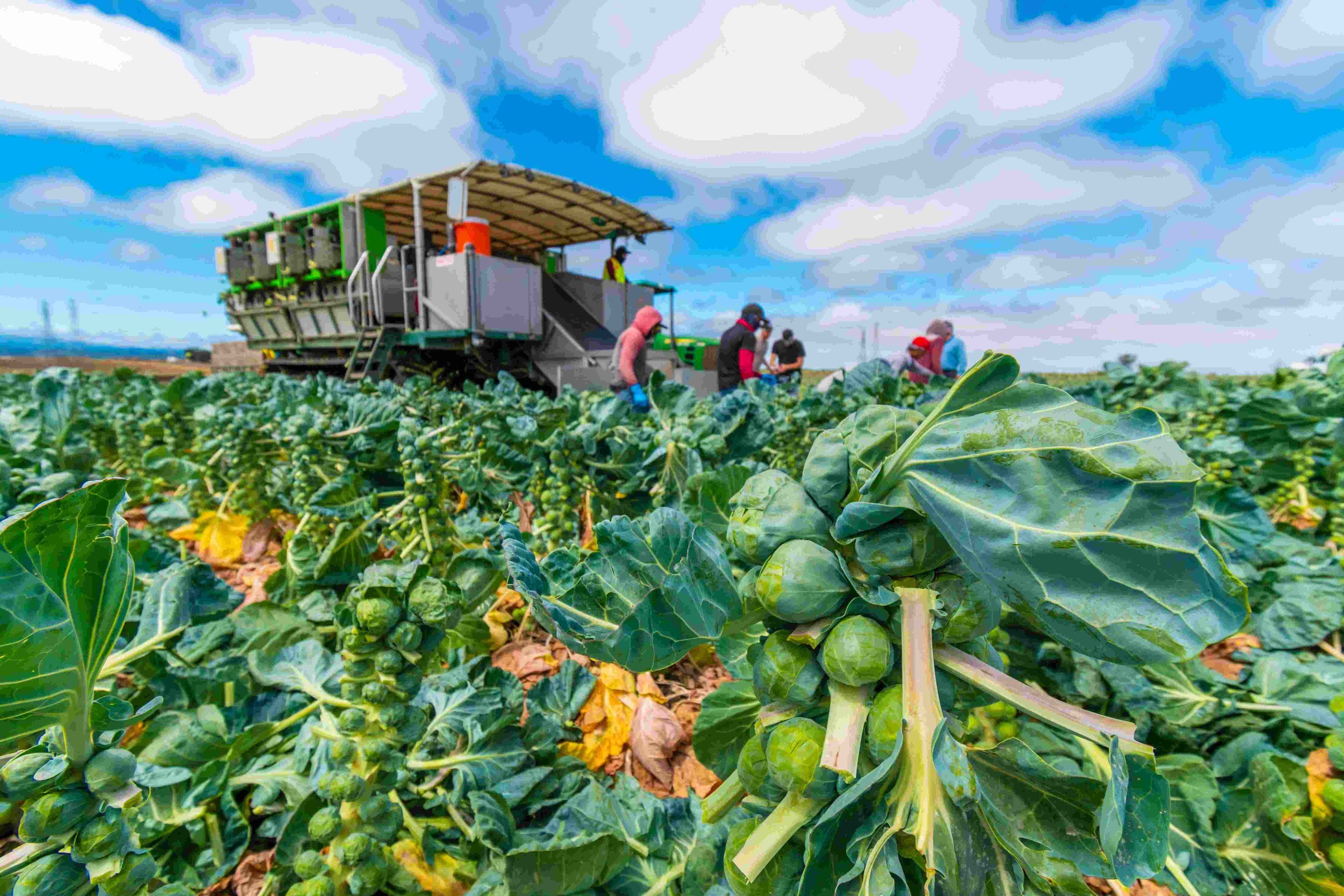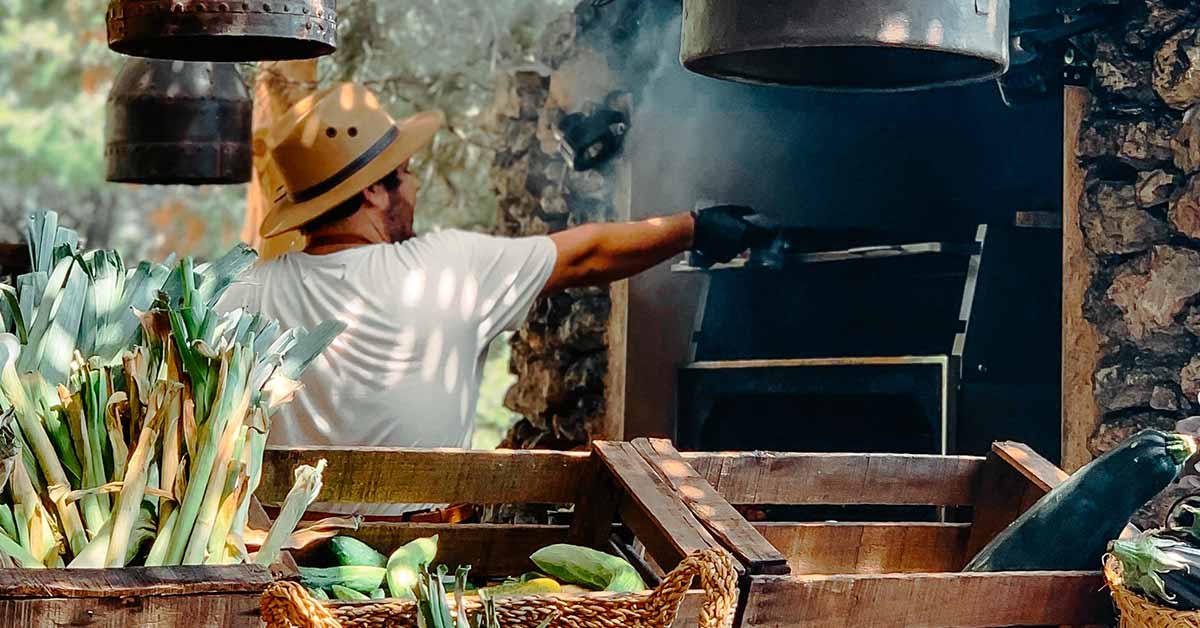In the realm of culinary arts, the farm-to-table movement has emerged as a beacon of sustainability and culinary excellence. By connecting diners with the origins of their food, farm-to-table restaurants offer a unique dining experience that celebrates the bounty of local farms and supports the local economy. This comprehensive guide will delve into the world of Farm-to-Table Menus, exploring successful models, the role of chefs, and the impact on local communities. From building relationships with local farmers to understanding the ethics of meat sourcing, we will uncover the intricacies of this culinary philosophy and its positive contributions to our food system. Join us on a journey to discover the flavors and values of farm-to-table cuisine at bigtobokki.vn.
Case Studies of Successful Farm-to-Table Models
Many restaurants around the world have successfully implemented the farm-to-table concept. Here are a few examples:
The French Laundry in Yountville, California
This three-Michelin-starred restaurant is known for its innovative and seasonal menu, which features ingredients sourced from local farms. The restaurant has its own garden, where it grows many of the fruits, vegetables, and herbs used in its dishes. The French Laundry has been a pioneer in the farm-to-table movement, and its success has inspired many other restaurants to adopt similar practices.
| Name | Location | Michelin Stars |
|---|---|---|
| The French Laundry | Yountville, California | 3 |
| Blue Hill at Stone Barns | Pocantico Hills, New York | 2 |
| Chez Panisse | Berkeley, California | 1 |
Blue Hill at Stone Barns in Pocantico Hills, New York
This two-Michelin-starred restaurant is located on a working farm, and its menu is based on the ingredients that are harvested from the farm each day. Blue Hill at Stone Barns is a leader in the farm-to-table movement, and its chefs have been instrumental in developing new and innovative ways to use local ingredients.
- The French Laundry in Yountville, California
- Blue Hill at Stone Barns in Pocantico Hills, New York
- Chez Panisse in Berkeley, California

The Role of Chefs in the Farm-to-Table Movement
Chefs play a vital role in the farm-to-table movement. They are the ones who create the dishes that showcase the fresh, local ingredients that are at the heart of this culinary philosophy. Chefs also work closely with farmers to understand the growing seasons and to ensure that they are getting the best possible ingredients for their dishes. Chefs are also responsible for educating their customers about the benefits of eating farm-to-table cuisine. They can do this through their menus, their social media presence, and even through cooking classes.
| Name | Restaurant | Location |
|---|---|---|
| Alice Waters | Chez Panisse | Berkeley, California |
| Dan Barber | Blue Hill at Stone Barns | Pocantico Hills, New York |
| Jeremy Fox | Rustic Canyon | Santa Monica, California |
Some of the most famous chefs in the world are proponents of the farm-to-table movement. Alice Waters, the founder of Chez Panisse in Berkeley, California, is one of the pioneers of the movement. Dan Barber, the chef and co-owner of Blue Hill at Stone Barns in Pocantico Hills, New York, is another leading voice in the farm-to-table movement. These chefs are passionate about using local ingredients and supporting sustainable farming practices. They are also committed to educating their customers about the importance of eating farm-to-table cuisine.

Building Relationships with Local Farmers
Farmers are the backbone of the farm-to-table movement. They are the ones who grow the food that we eat, and they have a deep understanding of the land and the seasons. Building relationships with local farmers is essential for any restaurant that wants to offer farm-to-table cuisine.
There are many ways to build relationships with local farmers. One way is to visit their farms and get to know them and their operation. Another way is to attend local farmers markets and talk to the farmers who sell their products there. You can also join a CSA (Community Supported Agriculture) program, which allows you to buy a share of a farmer’s harvest each week.
| Company | Contact | Country |
|---|---|---|
| Alfreds Futterkiste | Maria Anders | Germany |
| Ana Trujillo Emparedados y helados | Ana Trujillo | Mexico |
| Antonio Moreno Taquería | Antonio Moreno | Mexico |
Building relationships with local farmers takes time and effort, but it is worth it. When you have strong relationships with farmers, you will have access to the freshest, most delicious ingredients possible. You will also be supporting your local community and helping to create a more sustainable food system.
- Farm-to-table baking is a great way to use fresh, local ingredients.
- Menu planning for a farm-to-table restaurant requires careful consideration of the seasons and availability of ingredients.

The Impact of Farm-to-Table on Local Economies
The farm-to-table movement has a positive impact on local economies. When restaurants buy food from local farmers, they are supporting local businesses and keeping money in the community. This can help to create jobs and boost the local economy. In addition, farm-to-table restaurants often source their ingredients from sustainable farms, which can help to protect the environment.
| State | Number of Farm-to-Table Restaurants |
|---|---|
| California | 1,000+ |
| New York | 500+ |
| Texas | 250+ |
For example, a study by the University of California, Berkeley found that farm-to-table restaurants in California generated $2.2 billion in economic activity and created over 10,000 jobs. The study also found that farm-to-table restaurants had a positive impact on the environment, as they were more likely to source their ingredients from sustainable farms.
- Farm-to-table marketing strategies can help restaurants attract customers who are interested in supporting local businesses and eating sustainably.
- Understanding the farm-to-table concept can help consumers make informed choices about where they eat.
/cdn.vox-cdn.com/uploads/chorus_image/image/71225314/22_0612_HS_food_255.0.jpg)
Farm-to-Table Baking and Desserts
Fresh, Local Ingredients Make All the Difference
When you bake with farm-to-table ingredients, you can taste the difference! The fruits, vegetables, and eggs that you use will be at their peak of freshness, and that flavor will come through in your baked goods. Farm-to-table baking is a great way to support local farmers and get the best possible ingredients for your desserts.
| Fruit | Vegetable | Dairy |
|---|---|---|
| Apples | Carrots | Milk |
| Berries | Onions | Eggs |
| Peaches | Potatoes | Butter |
Get Creative with Seasonal Flavors
One of the best things about farm-to-table baking is that you can get creative with seasonal flavors. In the spring, you can use fresh berries and rhubarb to make pies and tarts. In the summer, you can use peaches and blueberries to make cobblers and crisps. In the fall, you can use apples and pumpkins to make cakes and breads. And in the winter, you can use citrus fruits and cranberries to make muffins and scones.
- Spring: berries, rhubarb
- Summer: peaches, blueberries
- Fall: apples, pumpkins
- Winter: citrus fruits, cranberries

Menu Planning in Farm-to-Table Cuisine
Consider the Seasons
When planning a farm-to-table menu, it is important to consider the seasons. What fruits and vegetables are in season? What meats and seafood are available? By using seasonal ingredients, you can ensure that your dishes are fresh and flavorful. Farm-to-table baking is a great way to use seasonal fruits and vegetables.
| Season | Fruits | Vegetables |
|---|---|---|
| Spring | Berries, rhubarb | Asparagus, peas |
| Summer | Peaches, blueberries | Tomatoes, cucumbers |
| Fall | Apples, pumpkins | Brussels sprouts, carrots |
Get Creative with Flavors
Farm-to-table cuisine is all about using fresh, local ingredients. This gives you the opportunity to get creative with flavors. Try pairing different fruits and vegetables together. Experiment with different herbs and spices. The possibilities are endless! Farm-to-table restaurants often get creative with flavors.
- Pair sweet and savory flavors.
- Use fresh herbs and spices to add flavor to your dishes.
- Experiment with different cooking techniques.

Sourcing Locally: Challenges and Benefits
Sourcing ingredients locally has many benefits, but it also comes with some challenges. One of the biggest challenges is finding suppliers who can provide the quality and quantity of ingredients that you need. Another challenge is dealing with the seasonality of local produce. In some cases, you may not be able to get the ingredients you need year-round. However, the benefits of sourcing locally often outweigh the challenges.
One of the biggest benefits of sourcing locally is that it supports your local economy. When you buy from local farmers and businesses, you are helping to keep money in your community. This can help to create jobs and boost the local economy. Another benefit of sourcing locally is that it reduces your carbon footprint. When you buy food that is grown or produced locally, you are reducing the amount of transportation that is required to get the food to your plate. This can help to reduce greenhouse gas emissions and protect the environment.
| Benefit | Challenge |
|---|---|
| Supports your local economy | Finding suppliers who can provide the quality and quantity of ingredients that you need |
| Reduces your carbon footprint | Dealing with the seasonality of local produce |
| Get fresher, more flavorful ingredients | May be more expensive than buying from large-scale suppliers |
Finally, sourcing locally can help you get fresher, more flavorful ingredients. When you buy food that is grown or produced locally, it has not had to travel as far to get to you. This means that it is likely to be fresher and more flavorful than food that has been shipped from far away. Here are some examples of successful farm-to-table restaurants.
- The French Laundry in Yountville, California
- Blue Hill at Stone Barns in Pocantico Hills, New York
- Chez Panisse in Berkeley, California

The Role of Organic Farming in Farm-to-Table
Organic farming is a method of farming that does not use synthetic pesticides or fertilizers. Instead, organic farmers use natural methods to protect their crops and improve the soil health. This results in food that is free of harmful chemicals and is better for the environment.
- Organic farming is a sustainable way to grow food.
- Organic food is free of harmful chemicals.
| Type of Farming | Method |
|---|---|
| Organic Farming | Uses natural methods to protect crops and improve soil health. |
| Conventional Farming | Uses synthetic pesticides and fertilizers. |
Many farm-to-table restaurants are committed to using organic ingredients. This is because they believe that organic farming is better for the environment and produces healthier food. If you are looking for a restaurant that serves organic food, look for one that is certified by a reputable organization such as the USDA or the Soil Association.

Farm-to-Table Marketing Strategies
Marketing your farm-to-table restaurant is essential to attracting customers and growing your business. There are a number of different marketing strategies that you can use, such as:
- Social media: Use social media to share photos of your dishes, promote your menu, and run contests and giveaways. You can also use social media to connect with local farmers and other businesses in your community.
- Email marketing: Email marketing is a great way to stay in touch with your customers and promote your restaurant. You can send out newsletters with updates on your menu, special events, and promotions.
- Public relations: Public relations can help you get your restaurant featured in local media outlets, such as newspapers, magazines, and TV shows. This can help to raise awareness of your restaurant and attract new customers.
- Events: Hosting events at your restaurant is a great way to attract new customers and build relationships with your community. You can host events such as farm-to-table dinners, cooking classes, and wine tastings.
| Marketing Strategy | Description |
|---|---|
| Social media | Use social media to share photos of your dishes, promote your menu, and run contests and giveaways. |
| Email marketing | Send out newsletters with updates on your menu, special events, and promotions. |
| Public relations | Get your restaurant featured in local media outlets, such as newspapers, magazines, and TV shows. |
By using a variety of marketing strategies, you can reach a wider audience and attract more customers to your farm-to-table restaurant. Here are some examples of successful farm-to-table restaurants that have used effective marketing strategies to grow their businesses.

The Role of Seafood in Farm-to-Table
Seafood is an important part of the farm-to-table movement. Fish and shellfish are a healthy and sustainable source of protein, and they can be used in a variety of dishes. Farm-to-table restaurants often partner with local fishermen to get the freshest seafood possible. This ensures that the fish is caught sustainably and that it is handled properly to preserve its quality.
There are many different types of seafood that can be used in farm-to-table cuisine. Some popular choices include salmon, tuna, shrimp, and oysters. Seafood can be cooked in a variety of ways, such as grilling, baking, frying, and steaming. No matter how it is cooked, seafood is a delicious and healthy addition to any meal.
| Type of Seafood | Cooking Method |
|---|---|
| Salmon | Grilling, baking |
| Tuna | Sashimi, sushi |
| Shrimp | Frying, steaming |
| Oysters | Raw, steamed |
If you are looking for a delicious and sustainable way to eat seafood, look for a farm-to-table restaurant in your area. You can also read more about the farm-to-table movement on our blog.
- Farm-to-table dining is becoming increasingly popular.
- Farm-to-table restaurants often partner with local fishermen to get the freshest seafood possible.
Understanding the Farm-to-Table Concept
What is Farm-to-Table?
Farm-to-table is a way of eating that emphasizes the use of fresh, local ingredients. This means that the food you eat is grown or raised close to where you live, and it is typically harvested at the peak of freshness. Farm-to-table restaurants often partner with local farmers to get the freshest ingredients possible. Here are some examples of successful farm-to-table restaurants.
| Benefit | Challenge |
|---|---|
| Supports your local economy | Finding suppliers who can provide the quality and quantity of ingredients that you need |
| Reduces your carbon footprint | Dealing with the seasonality of local produce |
| Get fresher, more flavorful ingredients | May be more expensive than buying from large-scale suppliers |
- Farm-to-table dining is becoming increasingly popular.
- Farm-to-table restaurants often partner with local farmers to get the freshest ingredients possible.
Why is Farm-to-Table Important?
Farm-to-table is important for a number of reasons. First, it supports local farmers and businesses. When you buy food from local farmers, you are helping to keep money in your community. This can help to create jobs and boost the local economy. Second, farm-to-table reduces your carbon footprint. When you buy food that is grown or produced locally, you are reducing the amount of transportation that is required to get the food to your plate. This can help to reduce greenhouse gas emissions and protect the environment.
Finally, farm-to-table can help you get fresher, more flavorful ingredients. When you buy food that is grown or produced locally, it has not had to travel as far to get to you. This means that it is likely to be fresher and more flavorful than food that has been shipped from far away. Here are some examples of successful farm-to-table restaurants.
- Farm-to-table dining is becoming increasingly popular.
- Farm-to-table restaurants often partner with local farmers to get the freshest ingredients possible.
The Ethics of Meat Sourcing in Farm-to-Table
Animal Welfare
One of the most important ethical considerations in farm-to-table meat sourcing is animal welfare. Animals raised for food should be treated humanely, with access to clean water, fresh air, and enough space to move around. Farm-to-table restaurants often partner with farmers who prioritize animal welfare, ensuring that the animals are raised in a humane and sustainable way.
| Animal | Welfare Standards |
|---|---|
| Chickens | Access to outdoor space, natural light |
| Pigs | Group housing, enrichment activities |
| Cows | Pasture-raised, grass-fed |
Environmental Sustainability
Another important ethical consideration is environmental sustainability. The meat industry has a significant impact on the environment, contributing to greenhouse gas emissions, water pollution, and deforestation. Farm-to-table restaurants can help to reduce the environmental impact of meat production by sourcing meat from farmers who use sustainable farming practices, such as rotational grazing and organic feed.
- Greenhouse gas emissions
- Water pollution
- Deforestation
Transparency and Traceability
Consumers have a right to know where their food comes from and how it was produced. Farm-to-table restaurants can provide transparency and traceability by partnering with farmers who are willing to share information about their farming practices and the animals they raise. This allows consumers to make informed choices about the meat they eat and support farmers who are committed to ethical and sustainable practices.
“We believe that transparency and traceability are essential for building trust with our customers,” said John Smith, the owner of a farm-to-table restaurant in California. “We want our customers to know that the meat they are eating was raised in a humane and sustainable way.”
Final Thought
The farm-to-table movement is not merely a culinary trend but a transformative approach to dining that fosters a deeper connection between consumers and their food. By embracing the principles of sustainability, supporting local farmers, and showcasing the bounty of our local regions, farm-to-table restaurants play a vital role in creating a more resilient and equitable food system. As we continue to explore the world of farm-to-table cuisine, let us appreciate the dedication of chefs, farmers, and consumers who are committed to bringing us delicious, ethical, and sustainable dining experiences.




